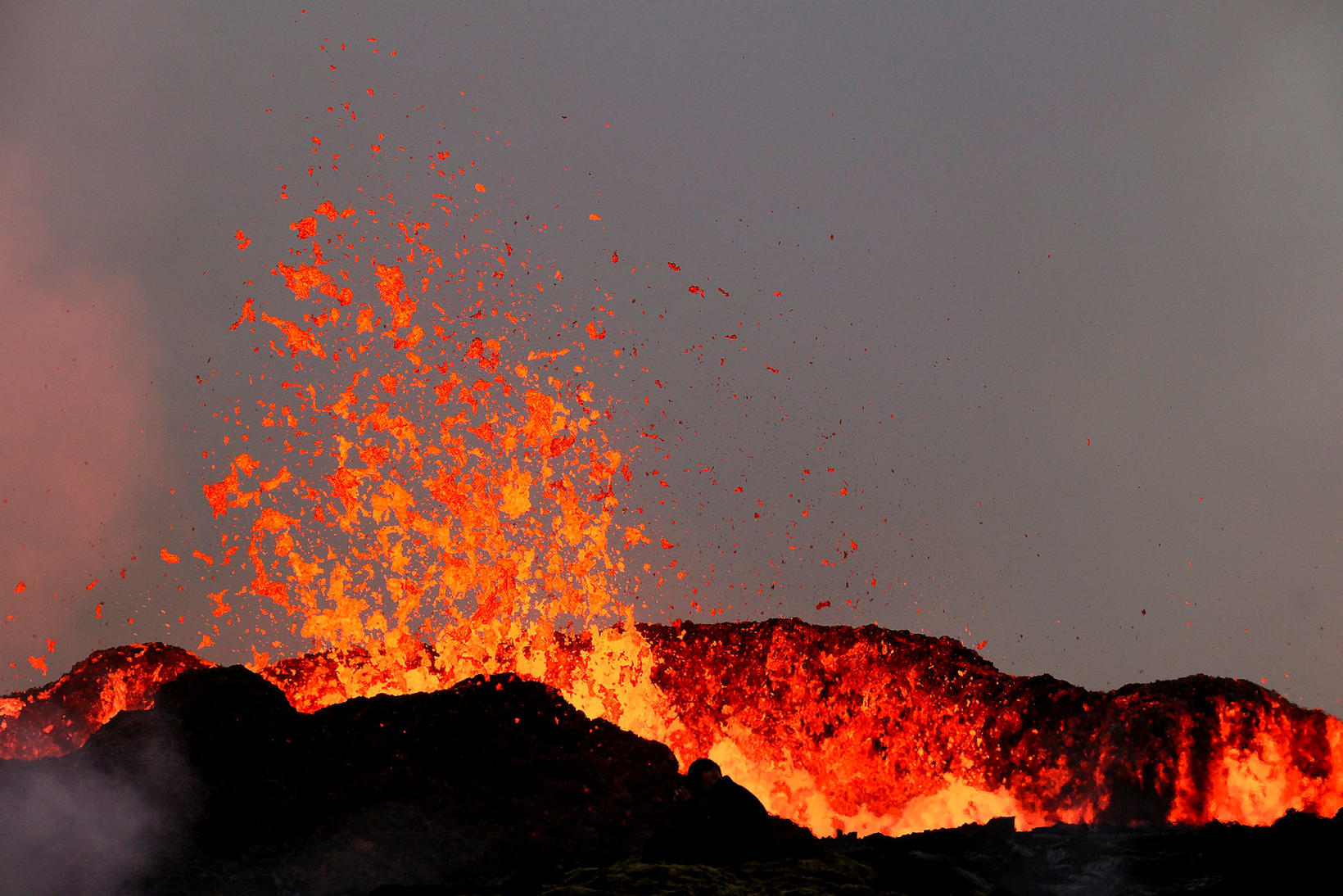Normal that the rims of the crater collapse in volcanic eruptions
The geophysicist Magnús Tumi Guðmundsson says the collapse of the crater rim overnight is normal behavior in a volcanic eruption and is seen in most eruptions that last for some time.
The collapse is a surface phenomenon that has nothing to say about the magma flow below.
The rims of the crater build up from magma splashes. The rims are very precarious, and when the rising heights of the crater, they may crack. The rims may temporarily slide back to the crust, where they eventually meet the ground. Then lava begins to flow again, as the alignment of the land indicates.
The flow is determined by the landscape
According to Guðmundsson, the landscape is dominated by where and how the lava will flow. He agrees with Verkís’ assessment that if the eruption is behaving as it has been so far will take about a month to come down to Suðurstrandavegur, the main road. There is certainly one scenario, but no one can predict with certainty how long the eruption will last.
He says that it is very beautiful to see the crater rim breaking, but that is a standard occurrence in an eruption like this.
The lava is now flowing again to the South
The morning is slowly getting off to a steady start in eruptions at the Icelandic Met Office, but according to a natural hazards expert, the lava seems to be flowing back to the south, if viewed by webcams.
“It’s awfully small,” says natural hazard expert Hulda Rós Helgadóttir.
All in relatively quiet conditions?
“Yes, all the roads in quakes, nothing unusual to see on monitors, the eruption seems to be similar there, and it seems on webcams to see that the lava is flowing back to the south again. That’s the main thing,” says Helgadóttir.
Access to the eruption site is open today.






/frimg/1/53/30/1533092.jpg)

